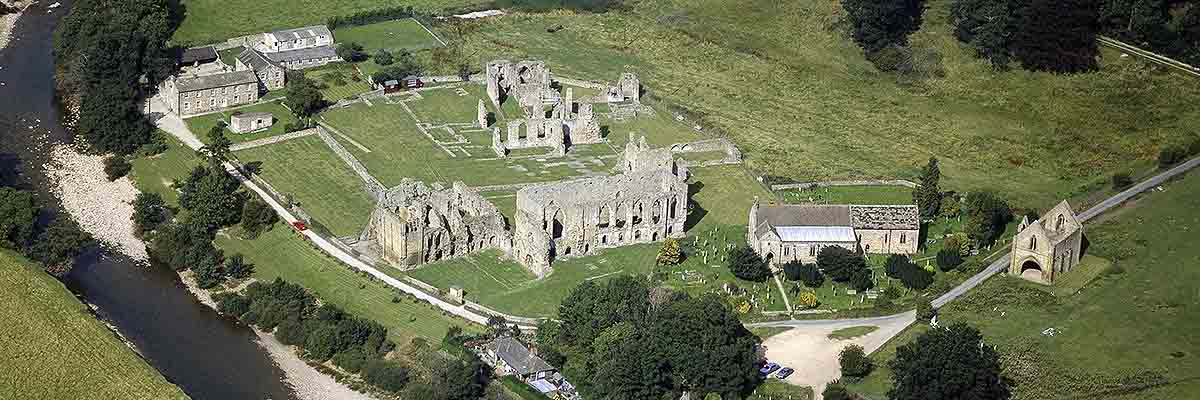Significance of Easby Abbey
Easby Abbey is one of the best-preserved Premonstratensian monasteries in England. Although the church was almost entirely demolished after the Suppression, the monastic ranges are well preserved and testify to the abbey’s wealth and prosperity in the Middle Ages. The refectory in the south range is particularly impressive.

Refectory
The well-preserved refectory remains are of considerable significance. The quality of the stonework and the elaborate architectural detailing rank it as one of the most important monastic refectories in the country. The surviving three-light and five-light Decorated style windows are particularly impressive.
Layout
Easby has one of the most irregular monastic layouts in England. Restrictions imposed by the river Swale and slope of the valley, combined with existing land boundaries when the abbey was founded, resulted in a variable alignment of the monastic ranges in relation to the cloister and church. The monks’ dormitory, for instance, was located in the west range, rather than the east range which was common monastic practice.
The group of buildings to the north of the abbey church are in an equally unusual location. They form an extensive self-contained complex, the precise function of which remains unknown.
Church of St Agatha
The parish church of St Agatha, which remains in use today, lay inside the monastic precinct, a more or less unique arrangement. The church contains rare 13th-century wall paintings and a remarkable surviving fragment of late 12th-century stained glass.
The incorporation of the parish church in the abbey complex may account for some of the irregularities in the abbey layout.
READ MORE ABOUT EASBY ABBEY